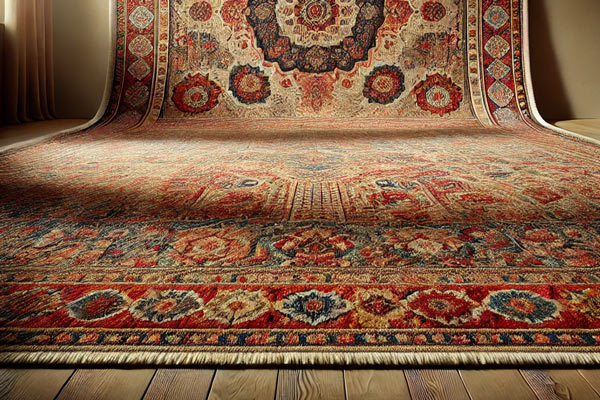Carpets are more than just floor coverings; they are integral elements of interior design that enhance the aesthetic appeal and comfort of a space. Widely used in homes, offices, and public areas, carpets provide warmth underfoot, reduce noise, and contribute significantly to the overall atmosphere. Whether plush or flat, carpets serve various functions, from adding style to providing safety by reducing slips and falls.

Contents
Definition of Carpets
A carpet is a textile floor covering made from woven or non-woven fabric, typically produced in rolls or tiles. They can be made from an array of materials, including natural fibers like wool and synthetic fibers like nylon and polyester. Carpets are characterized by their thickness, texture, and pile height, which can range from very low to very high structures. This variety allows carpets to offer different tactile experiences and visual aesthetics, catering to diverse preferences and needs.
History and Origin
The history of carpets dates back to ancient civilizations, with the oldest known carpet, the Pazyryk Carpet, discovered in Siberia, dating to the 5th century BCE. Initially, carpets were handwoven by skilled artisans, often using natural materials like wool and silk. Over centuries, regions such as Persia, Turkey, and India became renowned for their unique carpet designs, utilizing intricate patterns and vibrant colors. With the advent of industrialization in the 19th century, carpet production saw a significant evolution, transitioning to machine-made carpets, which made them more accessible to the masses while maintaining various design elements.
Types of Carpets
Carpets can be broadly categorized into several types, each offering unique features:
Wool Carpets
Wool carpets are prized for their natural beauty and durability. They are inherently stain-resistant and flame-retardant, making them a safe choice for residential and commercial spaces.
Synthetic Fiber Carpets
Made from materials such as nylon, polyester, and olefin, synthetic fibers are popular for their affordability and diversity in styles. They are often easier to clean and maintain compared to their natural counterparts.
Area Rug
Typically smaller than wall-to-wall carpets, area rugs serve as decorative elements within a room. They can define spaces, add color, and create a sense of comfort in various environments.
Decorative Carpets
These are often more artisanal, featuring unique designs, patterns, and color schemes. Decorative carpets are primarily used for aesthetic purposes, showcasing cultural or artistic motifs.
Uses and Benefits
Carpets find application in numerous settings. In residential areas, they enhance comfort and warmth, making living rooms and bedrooms feel cozy. In commercial spaces, carpets help absorb sound, contributing to a more pleasant environment. The benefits of carpets include:
- Comfort: Soft underfoot, carpets provide a cushioned surface ideal for walking, playing, or sitting.
- Insulation: They help retain heat, making spaces warmer in colder climates.
- Aesthetic Appeal: Carpets add style and richness to interior design, available in various colors, patterns, and textures.
How to Choose and Use Carpets
When choosing a carpet, consider the following factors:
- Material: Decide between natural or synthetic fibers based on your needs and preferences.
- Durability: Assess the carpet’s wear rating, especially for high-traffic areas.
- Style: Choose a color and pattern that aligns with your interior decor.
- Size: Ensure the carpet fits appropriately in the intended space.
When using carpets, it’s important to:
- Place heavy furniture on carpets to avoid slipping.
- Use area rugs to create distinct zones in larger rooms.
Maintenance and Cleaning
Proper care and maintenance can extend the lifespan of your carpet significantly. Here are some tips:
- Regular Vacuuming: This helps remove dirt and prevent matting.
- Immediate Stain Treatment: Address spills promptly with appropriate cleaning solutions to avoid permanent stains.
- Professional Cleaning: Schedule deep cleanings periodically to maintain hygiene and appearance.
- Avoid Excessive Moisture: Excess water can lead to mold growth, so avoid overly wet cleaning methods.
Conclusion
Carpets serve as fundamental components in enhancing the comfort, aesthetic appeal, and functionality of spaces. Understanding their characteristics, types, uses, and maintenance is crucial for anyone looking to incorporate carpets into their environment. With the right choice and care, carpets can provide lasting beauty and comfort for years to come.
